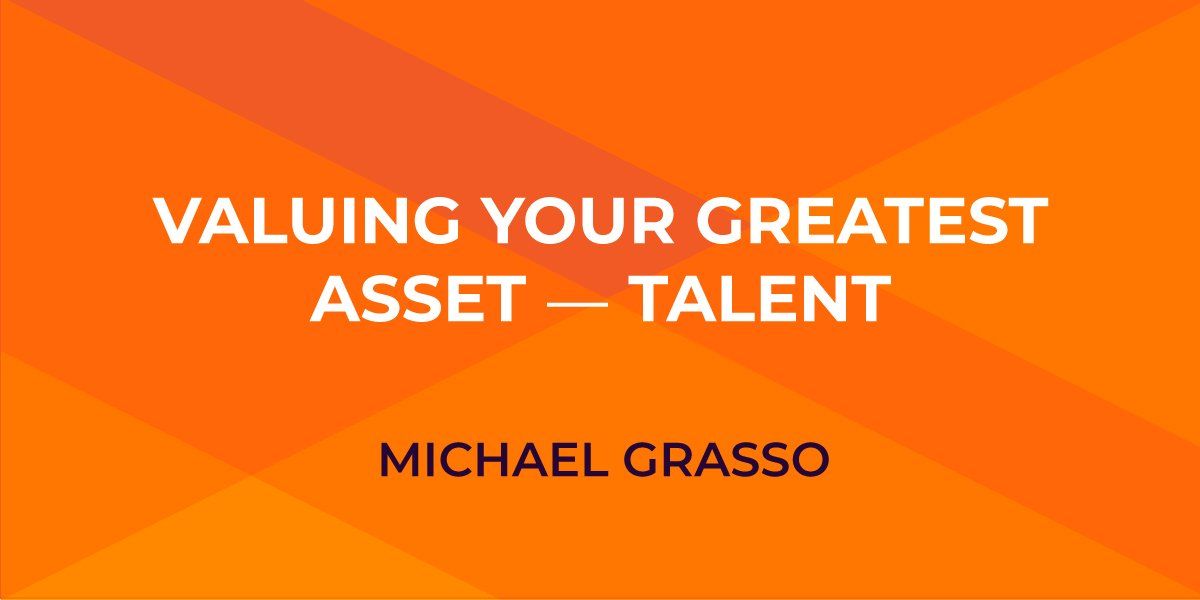Valuing Your Greatest Asset ─ Talent
I saw a very interesting quote, CFO asks CEO: “What happens if we invest in developing our people and they leave us?” CEO: “What happens if we don’t, and they stay?” The truth is, when it comes to the workplace, it’s hard to refute that your organization’s talent is, quite literally, its most valuable asset. If you remove the workers from the workforce, what are you left with? Maybe some tech that can automate some processes, but primarily, you’ve got an empty shell or a husk of what once was. As it stands, the C-Suite of any organization should have a pretty good idea of how much ‘talent’ costs, but with a simple Google search, they can certainly find the comparable salaries that other organizations dish out. That said, how many organizations actually have a clue how much their talent is worth, and how do they even quantify the value of individual talent within an organization? Is this a monetary value, a social value or is it something more intangible?
Let’s summarize your human workforce for a second. The performance of your staff entirely dictates the customer or client service provided by your organization ─ if it is excellent, then you win, if it is awful, you lose. Let’s say your organization receives a call from an unhappy client. From the moment they pick up that phone, they become the primary service provider for the end-user. Suddenly, from that moment on, the market-topping product that your organization provides means nothing, and the client judges the name above the entrance of your offices by the quality of the member of staff who answered the phone. That one person represents the entire organization and their performance being the best possible is vital to your client relations.
Suddenly, the person on your payroll has become the face of the entire organization and subsequently its most valuable resource ─ a critical asset. This is exactly the same in all aspects of your business operations. Every member of your workforce contributes towards the production and delivery of whatever product or service that your organization sells to the consumers. What does this mean? Well, it means that each individual member of staff is key in determining how your stakeholders react to your organization on the markets ─ and whether you thrive or decline, in the end.
How To Be Employee-Centric
Here are some ways to ensure that your organization can change its ways and show its employees that it knows they’re the most important asset that they have.
- Make your plans. Ensure that there is a set vision for the future of your organization and that it is fully developed; all ambitions and aspirations must be shared throughout the organization from C-Suite to office clerk. And, make sure that absolutely everybody that works for your organization understands exactly how their individual effort, in their job role, makes the difference. It’s all about exceptional service for the end-user.
- Picture this: your organization upside-down. Think of the structure of your operations in a way that puts the clients and customers at the top, then those who work directly with them, then the support layer of staff, and so on, and so forth. And, yes, before you ask… the C-Suite is at the bottom of the ‘importance scale’ when you look at it this way. Suck it up.
- You should implement some awareness programs to help educate staff on all of the upcoming developments within the organization. This shift will allow you to show your staff the changes that are needed in the new work environment.
- Find new ways to figure out how well your staff are performing and reward them when they’re performing well or above-standard. This will motivate your workforce and should push them to achieve peak performance of their own volition.
- Make sure that your management team is onboard and openly promoting the cultural shift that the organization is experiencing.
For the organization of the future, it is imperative that C-Suite executives recognize that now, more than ever, human capital is the most important asset that companies have. While technological advances are pushing organizations to a whole new level, it’s humans, not equipment, data, intellectual property, or technology that hold all of the answers for your future success. In other words, the priority for any company looking to lead the marketplace into the future needs to focus first on its workforce.




